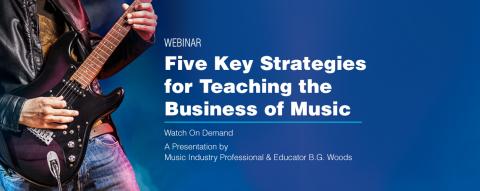
Recomposing Music Training for Online Learning
Teachers and Students all over the world have felt and continue to feel the impact of Covid 19. In addition to school classes moving online or being canceled altogether, classes in the Arts have also taken a serious hit. Music teachers have had to learn a completely different way of working with students, a way in which allows for continued growth and provides motivation for each student. As this Pandemic continues, Music teachers must also continue to adapt, encourage and excite students so they can find positivity in this time of crisis. Here are some methods I have found that work best for online teaching.
Online Platforms for Teaching:
Whether you are teaching online or in-person, interacting with students is now from a distance, of at least 6 feet! In California, I know of almost no teachers who are teaching in their studios currently, as the Covid is still surging in most parts of the state. A main area where teachers need to be flexible is the actual software available for online instruction.
Zoom: This is a great program for both individual lessons and classes. There is a free version and a paid version. The paid version allows for unlimited usage time, which optimal for any teachers wanting hold recitals, workshops or longer lessons/classes.
Pros:
- Screen sharing with students
- Unlimited time for classes
- Multiple students at once
- Can record the lesson/class and share with students
- Free for students to download
- Chat room and other apps integrate easily
Cons:
- Lag in sound
- Steep learning curve
- Limited time in free version
- Students must download in order to participate on their phones/tablets
Facetime: Built into all iPhones, free and user friendly.
Pros:
- Easy for students to use
- No link needed
- Can Facetime multiple students at once
- No time limit
Cons:
- Only available on Apple devices
- Not easy to record the lesson/class
- No screen sharing
- Incoming calls/texts may interrupt the session
Skype: Free to download on computers/smart phones/tablets.
Pros:
- Free, easy to use
- Decent sound quality
- Allows for screen sharing
- Chat room
- Can record the lesson/class
- Emojis for quick responses
- 4-hour time limit per call
Cons:
- Not optimal for multiple students
- Background noise picked up rather easily
- Lag in video
- Difficult to share files
While it is easy to use one platform for all students, it may not be possible, depending on what devices/connections students have. I found that Zoom tends to be the best for most people because of its universality of availability on devices.
Motivation for Students:
Many students are battling anxiety, depression and loneliness during these unprecedented times. As teachers, we can provide opportunities and set goals for students to keep them motivated to continue their studies. In Music Education, there are countless online outlets and performance opportunities that will excite and encourage students.
Workshops: These work best on Zoom where many individual students or classes can participate.
- Music History Workshops: Integrate pictures, videos, music and even
Include apps like “Kahoot” for friendly competition.
- Music Theory Workshops: Screen share to show concepts, use the chat room for students to ask questions, integrate outside Music Theory apps so they can see animations of concepts. Topics can include: Rhythm, Notation, Time Signatures, Key Signatures, Harmonic Analysis, etc.
- Vocal Technique Workshops: Host workshops on different areas of vocal technique, which can include: Breath, Resonance, Support, Diction, Acting, Registers, Warm-ups, Stretching, Anatomy, etc.
- Piano/other Instrumental Technique Workshops: Host workshops on different areas of technique which can include: Hand & Body Position & Stretching, Phrasing & Articulation, Dynamics, Ornamentation, Stylistic differences in different time periods, etc.
- Sight-reading and Ear-Training Workshops: Introduce best methods to practice these concepts. Use screen sharing to show websites/apps that help students reinforce/practice.
Improvisation: Encourage students to improvise! There is no “right” or “wrong” way to improvise, which encourages students to create without judgment.
- Improvisation for Voice Students:
- Write different emotions on flashcards like “Angry, Anxious, Excited, Nervous, Thrilled…” and hold them up while students sing through a song. Have them reflect the emotion (change them throughout the song) to help them find the levels of meaning possible in their songs.
- Use gibberish in lessons/classes to show how to communicate meaning through sound alone. Students love this!
- Give students a topic, emotion & musical style and have them improvise a song.
- Improvisation for Piano/Instrumental Students:
- Show different pictures to students and have them improvise a melody on their instrument. Pictures that work well are: Rain, Waves, Storms, Animals either chasing, fighting, showing affection, Landscapes, People sitting alone, Someone crying…
- If students are intimidated by this, give them a key/position and demonstrate what you would do. Providing guidelines allow for even timid students to try!
- Provide a bassline either with a single note, arpeggio or chord progression and have students improvise a melody. You can use different styles or themes as well. This can help them learn how to compose as well!
- If students are intimidated by this, give them a key/position and demonstrate what you would do. Providing guidelines allow for even timid students to try!
- Show different pictures to students and have them improvise a melody on their instrument. Pictures that work well are: Rain, Waves, Storms, Animals either chasing, fighting, showing affection, Landscapes, People sitting alone, Someone crying…
Performances/Master Classes: Create online performance opportunities for students! These can include families or be designed for students only.
- Recitals:
- Zoom recitals can be held live, where students can take turns performing.
- Every student will need to be on mute until it is their time to perform.
- Students will need to make sure they have a strong signal in order to perform without lagging/connection issues.
- Teachers can record each individual student’s performance or the entire recital and share with students.
- Zoom recitals can be held live, where students can take turns performing.
- Master Classes:
- Collaborate with other teachers and create Master Classes for your students on Zoom.
- Have students “audition” by sending in a video, then select participants based on their audition tape.
- During the master class, work together with another teacher to evaluate students during the class.
- Invite families and other students to attend the Zoom.
- Collaborate with other teachers and create Master Classes for your students on Zoom.
- Practicums:
- Create “Practice Recitals” for students to perform a piece and provide feedback to each other.
- On Zoom, students can use the chat room to write feedback after a student performs.
- Students can also send private messages to the teacher, and the teacher can share feedback.
- Students can also “unmute” themselves and verbally share feedback.
- Create “Practice Recitals” for students to perform a piece and provide feedback to each other.
Provide a performance opportunity and/or workshop at least once a month, or even bi-monthly to keep students motivated and excited to learn!
Communication & Structure:
Providing structured weekly lessons/classes for students is key for their success. It is also important to communicate clearly what students are to practice every week.
- Assignments:
- Put assignments in writing.
- Email/text assignments to students (and parents of students in High School & below).
- Post assignments on your website.
- Email/text assignments to students (and parents of students in High School & below).
- Put assignments in writing.
• Focus on different concepts every week/couple of weeks in addition to regular lesson material. These could include:
- Technique
- Vocal health/Instrument care
- Improvisation
- New Repertoire
- Interpretation
- Write lesson plans
- Whether you are teaching private lessons or classes, prepare plans for each week to keep yourself organized.
- Write lesson plans
- Communication:
- Use a scheduling program that can send announcements, invoices, assignments, etc. A program I use is called “My Music Staff”, where students and parents have their own logins to see assignments, tuition, announcements and more.
- Create a website for students/parents to see the schedule, post assignments, handouts, sign-ups for recitals, etc.
- Use a Google calendar for all studio related activities (lessons, classes, workshops) and post on your website/share with students so families have an easy place to find information.
- Use a scheduling program that can send announcements, invoices, assignments, etc. A program I use is called “My Music Staff”, where students and parents have their own logins to see assignments, tuition, announcements and more.
Music provides an outlet for students to express, create and share their talent. Teaching online does not have to impede a students’ musical education. Teachers can encourage students by providing superior music education through online platforms, performance opportunities and structured communication. Doing so provides positivity and goals for so many students who need it now more than ever.
“Music is the language of the spirit. It opens the secret of life bringing peace, abolishing strife.”
- Kahlil Gibran
Sarah Sandvig has been teaching voice and piano since 1993. She received her Bachelors degree in Vocal Performance from UCLA, and her Masters degree in Music Education from CSULB. She maintains a private voice & piano studio of over 65 weekly students. She also received the Outstanding Thesis Award in 2004 from CSULB. Sarah has all 12 of her books (Music Theory for Singers Vol. 1-10 and her new Digital Sight-Singing & Ear-Training series published by Kendall Hunt Publishing, in addition to having been published in several educational journals and being recognized for her work with children with autism. Sarah is a proud founding member of "VO-CAL" a non-profit organization and annual competition held in Southern California. Sarah has recorded the album "Serendipity" under the name Sarah Suzanne, available in Apple Music, Spotify, and similar streaming services, and can be heard singing vocals on commercials and recording voice-overs. While not teaching, she is busy Evaluating at Competitions & Festivals and staying active with events for students and teachers through MTAC and NATS. She is most blessed to have a wonderful & supportive husband and two incredible boys!!



